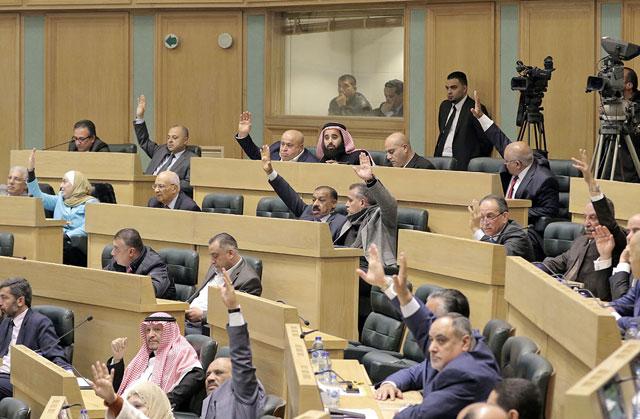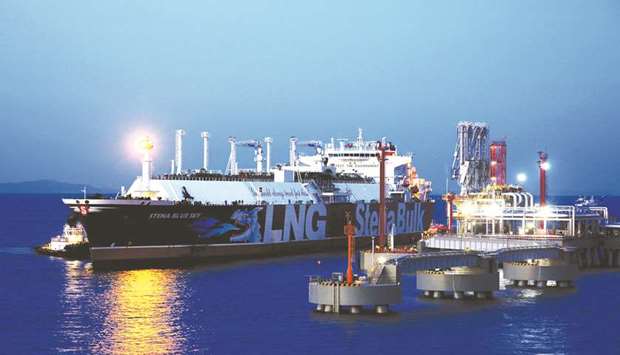MPs demand scrapping Israeli gas deal ‘at any cost’

AMMAN — The Lower House on Tuesday declared its “utter rejection” of the gas deal between Jordan’s National Electric Power Company (NEPCO) and the Israeli occupation authorities.
House Speaker Atef Tarawneh said that all segments of society and MPs reject the gas deal signed with the “Zionist entity”, requesting that the agreement be “cancelled at any cost”.
Deputy Prime Minister Rajai Muasher said that the government has decided to refer the gas deal with Israel to the Constitutional Court for interpretation of Article 33 of the Constitution.
Paragraph B of the said article reads: “Treaties and agreements which involve financial commitments to the Treasury or affect the public or private rights of Jordanians shall not be valid unless approved by the National Assembly. In no circumstances shall any secret terms contained in any treaty or agreement be contrary to their overt terms.”
Meanwhile, dozens of citizens staged a protest in front of the Parliament on Tuesday demanding the termination of the gas deal with Israel.
A total of 16 deputies signed a memorandum, requesting a vote of no confidence in Prime Minister Omar Razzaz’s government for signing the gas deal with the “Zionist entity”.
Muasher said that the government would refer the deal as a law to the Parliament if the Constitutional Court required it to do so.
“But if the court rules that the deal is between two companies and the Parliament has no say over it, the government will review the agreement again and take the necessary decision in consultation with the House,” Muasher added.
In response to Muasher, Tarawneh said that “the deal is completely rejected and we demand it gets cancelled at any cost and no matter what the Constitutional Court says”.
MPs called on the government to look for alternative energy resources from Arab states, arguing that the gas deal threatens Jordan’s energy security and serves the Israeli occupation’s economy.
Other deputies called for suing the government that signed the gas deal with Israel.
In September of 2016, NEPCO signed a 15-year agreement with Noble Energy, a Houston-based company that holds the largest share in the Israeli Leviathan Gas Field, to purchase $10 billion worth of natural gas.
The government then said it would import 250-300 million cubic feet of natural gas per day from Noble Energy, which is expected to save the Kingdom around JD700 million.
Under the deal, Jordan will receive 3 billion cubic metres of gas per year.








